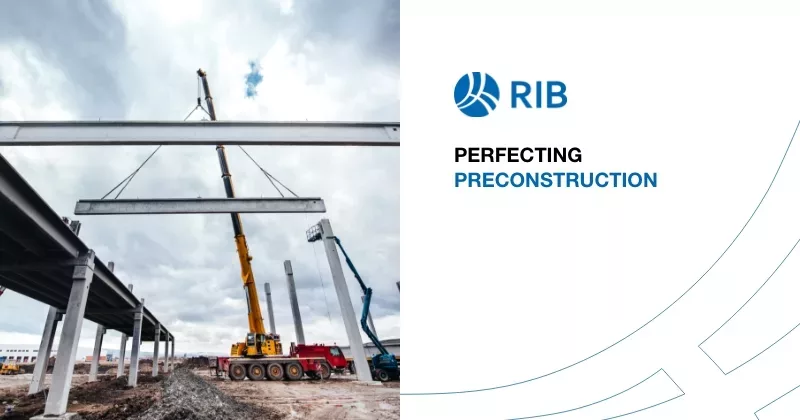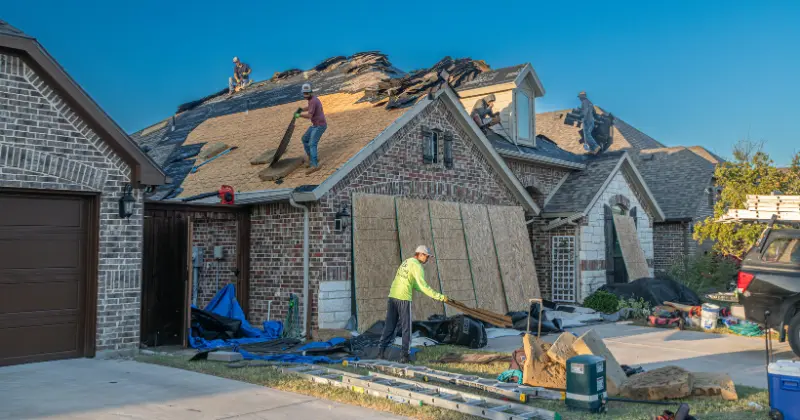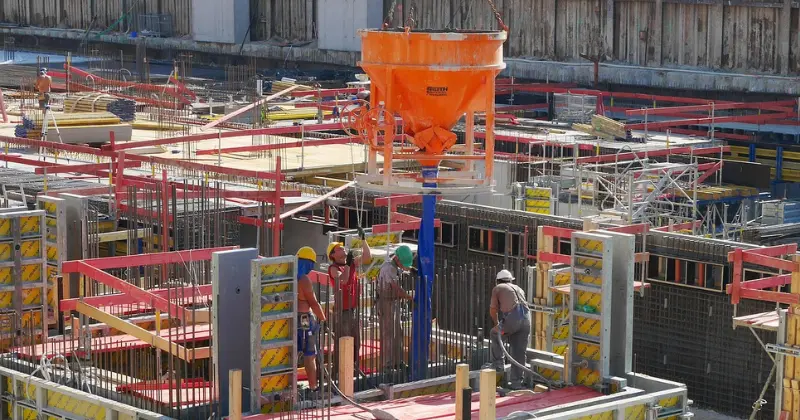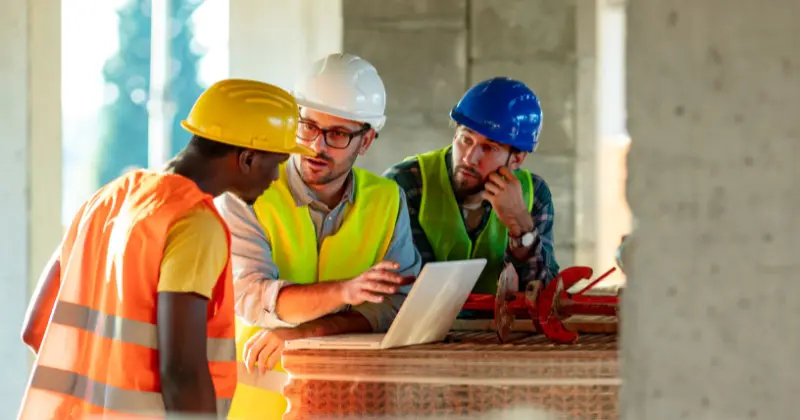11 mins read
What Is a Construction Feasibility Study? A Comprehensive Overview

Thousands of new construction projects are proposed each year, with designers and clients continuing to apply the latest architecture and technology in new and exciting ways. Feasibility studies are the “reality checks” that separate viable proposals from the long list of contenders and give projects a better chance of success.
In this blog post, we discuss construction feasibility studies, including why they are needed and who is responsible for them. We also review some recommended best practices that make these studies more accurate and effective.
What Is a Construction Feasibility Study?
A construction feasibility study is a detailed analysis of a proposed project that helps to determine if the associated design, financial, and environmental elements will produce a viable result. Risks and benefits are weighed to determine whether work should continue.
An effective feasibility study conducted during the preconstruction phase involves a top-to-bottom review to determine whether a project can be completed as intended, and if the result is likely to be profitable for project owners, builders, and other stakeholders. A comprehensive study might also include a social feasibility review to assess public interest or opposition to the concept.
Who is in charge of construction feasibility?
Ultimate responsibility falls upon the project owner or client, but feasibility analysis in construction is much too complex for any one person to handle alone. A team-based approach to feasibility should begin by engaging construction architects and design engineers with other experts, consultants, and stakeholders brought in as needed to assess specific aspects of the project. A multi-faceted team might also include:
- Environmental consultants: These experts evaluate the project with respect to sustainability, pollution, and the impact on surrounding wildlife. They might also assess the alignment with urban development plans in the area.
- Financial experts: Specialists in the financial realm perform cost-benefit analyses, evaluate funding options, and estimate profit margins to determine if the project is financially viable.
Large design-build firms sometimes establish their own dedicated teams or departments to complete feasibility studies and lessen their dependence on outside consultants, engineering experts, and attorneys, whose services can come at a high cost.
Do all construction projects need a feasibility analysis?
The benefits of feasibility studies are obvious since they can either prevent owners from pursuing projects with a limited chance of success or confirm the potential of new designs and concepts. Site and feasibility assessments can also be expensive, which makes them less practical when the budget or scope is limited. A construction feasibility study should always be completed for:
- Government-funded infrastructure projects
- Large multi-unit residential developments
- Mixed-use developments in heavily populated areas
- Structures built on previously uninhabited or protected lands
Minor renovations, standalone single-family homes, prefabricated buildings, and other less complicated efforts might safely omit comprehensive feasibility studies, especially when they are similar in size and scope to previously completed work.
Why do You Need a Feasibility Analysis in Construction?
Even the best building concepts can be subject to problems and risks that aren’t always apparent without a detailed review. For example, the intended usage of the building might not be in alignment with zoning or environmental laws, or seismic conditions in the area selected might not be compatible with proposed design features.
The projects that are deemed viable also benefit from feasibility analysis, since the issues revealed through the process can be addressed early on, or changes to the design, site, or scope can be made to improve the odds of success. Preliminary project budgets and timelines are more realistic when they incorporate the information found in the feasibility report.
Components of a Construction Feasibility Study

The topics covered during a construction feasibility study will vary depending on the size and scope of the project, but a typical study and report will include the following:
Project description
Basic information about the project, such as the title, proposed location, occupancy type, and expected size, sets the stage for the work that follows. Additional information that might be included within the description section of a construction feasibility report includes:
- Name(s) of the project owner/developer and other key stakeholders
- Estimated construction timeline, including start and end dates
- Key project features and unusual or unique amenities
- Expected overall cost and budgetary constraints
Technical feasibility
This component of the study includes a full evaluation of engineering requirements, site suitability, and material selection to determine whether it is possible to complete the project as designed in the location selected, or if changes are necessary before proceeding.
Geologic hazard assessments, seismic studies, and soil testing might also be performed to better understand the site condition and physical constraints. Building information modeling (BIM) technology provides a convenient option to perform structural testing and review design options using digital methods.
Financial feasibility
No project can be launched or completed without adequate funding, so the construction feasibility report should include an estimate of all material, labor, equipment, and land acquisition costs associated with the project. An explanation of expected funding sources should also be provided, especially when loans or outside investments are being considered. A detailed assessment of profitability allows owners and investors to decide whether the endeavor will meet their expectations.
Operational feasibility
Even when a robust design concept and adequate funding sources are in place, operational and logistical variables have the potential to undermine success. Operational components of the feasibility study include a review of skilled construction labor and contractor availability, supply chain and material cost issues, and any other risk factors with the potential to create long project delays or significant work disruptions.
How do You Conduct a Feasibility Study?

A standard report template or construction feasibility study checklist can make the process smoother, but tailoring the study to the project and following some key best practices is also important. These initial steps ensure the right subjects are reviewed and data-based decisions can be made based on the results.
1. Understand project scope and goals
Basic project information should always be found on the first page of the construction feasibility report, but a more detailed explanation of the goals and objectives is also recommended. This includes a breakdown of the type and function of the structure or facility, the surrounding landscape and infrastructure, and the long-term socio-economic goals of the project as an integral part of the community.
2. Consider legal and regulatory issues early
Each facet of construction feasibility has the potential to derail the project, but legal and regulatory concerns should always be considered as early as possible. This includes a detailed review of zoning, land-use, environmental, and permitting constraints that can lead to costly delays, fines, or project cancellations if not thoroughly vetted early on. The expense associated with expert legal advice is easily offset when major legal hurdles are identified quickly.
3. Use the TELOS formula
The TELOS formula is a framework laid out by author James A. Hall in his 2007 book entitled, “Accounting Information Systems.” TELOS is a clever and easy-to-remember acronym that ensures project leaders consider these five key areas of construction feasibility:
- Technology
- Economic
- Legal
- Organizational
- Scheduling
The TELOS framework is converted into a numeric score when each factor is assigned a feasibility value from 1-10, weighted depending on the relative importance of each factor to the project. Numeric scores allow feasibility study results to be evaluated and compared more easily.
4. Don’t ignore sustainability
Along with the “big five” areas included in the TELOS framework, sustainability is also an important consideration, even for projects outside of the green building category. Sustainable construction materials, that minimize embodied carbon, help to improve the efficiency and environmental impact of the structure, both in the short and long term. Waste reduction, efficiency, and a minimized carbon footprint also make construction projects more viable for investors and occupants seeking sustainable alternatives.
5. Estimate costs and quantities with software
Accurate cost and quantity estimates are essential for obtaining clear and unbiased feasibility study results since they provide an early indicator of the expected project cost. Takeoff and estimating software tools such as RIB CostX streamline this process by performing takeoff from all commonly encountered design formats and providing real-time access to a comprehensive cost database. Our solution cuts the time it takes to estimate the resource requirements of a project with increased accuracy and precision, offering a true picture to assess financial feasibility.
6. Track everything in a construction feasibility report
Each study or individual finding brings value, but a construction feasibility report puts the information together in a more comprehensive and organized format. The length of these reports varies from under 20 pages for small-scale studies to hundreds of pages for major public infrastructure projects. The conclusion section of the report should clearly state why the proposal is (or is not) viable, and how it can be improved.
Conclusion
Feasibility studies are one of the most valuable activities completed during preconstruction planning since they give owners and stakeholders the information they need when projects have little chance of long-term success. Software tools dramatically improve the efficiency and accuracy of these studies while building confidence in the results.
CostX estimating software is an ideal solution for construction feasibility, with flexible takeoff, estimating, and reporting functions that easily adapt to the workflows and requirements of each unique project. With powerful features that allow you to live-link estimates to project drawings, you’ll be able to accurately estimate the financial requirements for the project and make a robust feasibility analysis that can be easily shared and accessed by all parties.
If you want to benefit from accurate, agile, and up-to-date estimates, get your free demo for RIB CostX today!
Get My Free RIB CostX Demo Now

Most Recent
11 mins read
10 mins read
10 mins read
29 mins read
Blog Categories

Ebook











